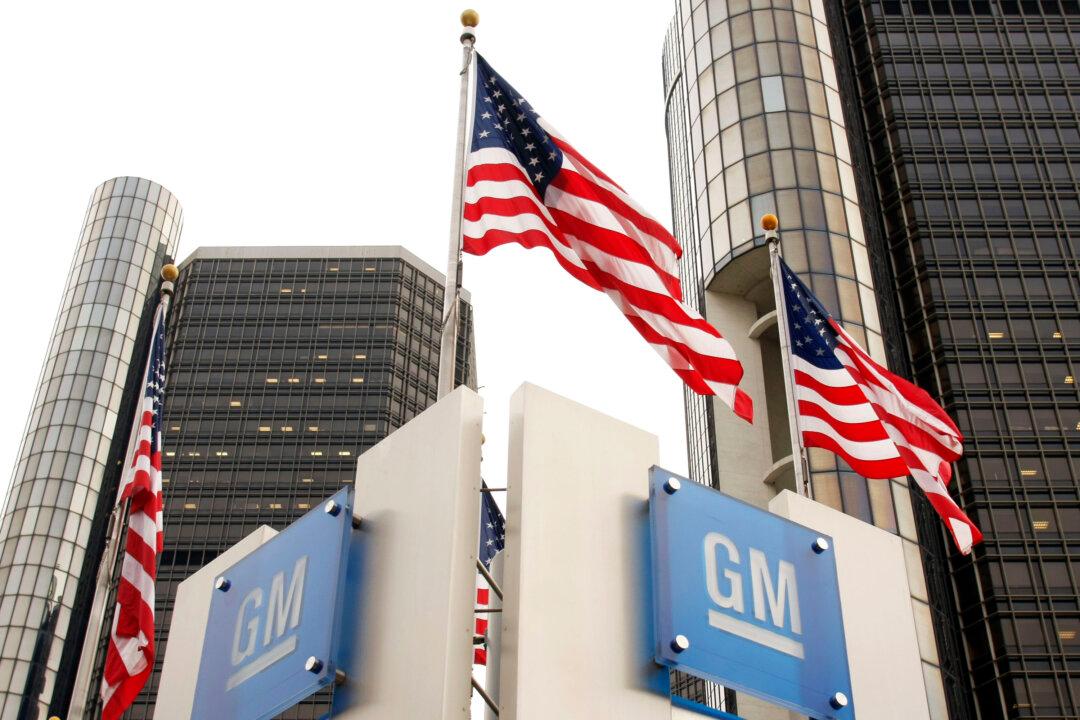General Motors Co. (GM), a company that was and might still be considered “too big to fail,” is still beholden to U.S. taxpayers and under the auspices of the Troubled Asset Relief Program (TARP), a Treasury program that was established to bail out financial institutions.
GM is on the verge of leaving the government fold, once the U.S. Department of Treasury sells the remaining stock it owns in the company. Taxpayers have been shortchanged and have so far lost $8.4 billion.
The company received $49.5 billion, $19.4 billion before applying for bankruptcy and $30.1 billion while in bankruptcy. The funds were paid out from the Automotive Industry Financing Program, which is under the auspices of TARP.
GM is still indebted to TARP for $20.2 billion, according to the Quarterly Report by the Special Inspector General for TARP (SIGTARP), released on April 24.
As of March 31, GM paid back $29.9 billion and $756.7 million in dividends and interest payments.
Treasury received approximately 912 million common shares, and 671 million shares have been sold since Nov. 18, 2010. Treasury received $32.75 per share for the shares sold in 2010, $27.50 for shares sold on Dec. 19, 2012, and $28.04 for shares sold from Jan. 18, 2013 through April 11, 2013.
The SIGTARP report suggests that taxpayers were paid $20.6 billion and lost $8.4 billion, or 29 percent, on shares sold since November 2010.
To break even, Treasury has to recoup an additional $19.9 billion, which amounts to $82.21 per share for the remaining stock. However, if the $756.7 million in dividend and interest payment is included, Treasury would need to recoup $19.1 billion, breaking even at $79.08 per share.
Neglecting Fiduciary Responsibility to Taxpayers
“On December 19, 2012, as part of its continuing efforts to wind down TARP, Treasury announced its intent to fully exit its remaining investment in GM within the following 12–15 months,” according to the TARP Monthly Report to Congress, dated March 2013.
On May 6, Treasury announced that it will sell its remaining 241.7 million shares of GM stock during 2014, adding a vague qualifying statement that the sale of the shares is “subject to market conditions.”
On May 14, the adjusted closing price per share was $31.55, according to Yahoo Finance historical tables. At 241.7 million shares, the proceeds would amount to $7.6 billion.
Depending on if one performs the calculation using the break-even amount of $19.9 billion or $19.1 billion, Treasury selling its remaining GM shares at the May 14 closing price of $31.55 would result in a taxpayer loss of $12.3 billion or $11.5 billion, respectively.
Taxpayer advocacy groups and market analysts suggest that the U.S. Treasury is neglecting its fiduciary responsibility to the American taxpayer.
According to Yahoo Finance historical tables, GM’s stock has not reached $40 per share since it became publicly traded again at $34.19 per share on Nov. 18, 2010.
According to market analysts, it is highly doubtful that GM’s stock will even get close to the break-even point in the foreseeable future.
Treasury “reiterated that the point of the Troubled Asset Relief Program (TARP) wasn’t to make money but to save jobs,” according to a May 9 article on the autoblog website.
Buy or Sell GM Stock
“Relative to its peers and sector, General Motors has been a year-to-date performance leader. Look for General Motors stock to outperform,” a May 5 article on the Wall St. Cheat Sheet website recommends. The article points to negative earnings and revenue growth during the first quarter of 2013 compared to the fourth quarter of 2012. But GM outperformed its peers during these periods, and the Cheat Sheet article calls the earnings realistic, creating a positive investment environment.
A May 10 analysis of GM on the InvestorGuide website suggests that GM is a “moderate buy,” with a rating of 1.70 on a scale of 1 to 5, where 1 is a strong buy and 5 a strong sell. When compared to six of its U.S. peers, GM ranks a 2 on the scale.
A May 10 article on the Seeking Alpha website is negative on GM stock purchases. It points to loan delinquency rates by GM customers, most likely resulting in repossession of vehicles that have lost value. Furthermore, overall auto sales have declined in Europe and North America, affecting GM’s auto sales.
A little-known factor highlighted by Seeking Alpha is the underfunding of GM’s pension liabilities by $27.8 billion, which has increased by 9.5 percent since the end of 2011. The article suggests that investors should not add GM stock to their portfolio.
“General Motors is a speculative gamble at best. GM’s current strategies are to pay off the government in the short term and to shore up or offload its pension liabilities in the long run. Neither of these strategies have shareholder interests in mind,” the Seeking Alpha article advises.
An article on the Motley Fool website offers the following recommendation: “GM isn’t a short-term ‘grab it and wait for the pop’ kind of investment. You should consider buying GM stock only if you’re willing to be patient for the next few years as this story continues to unfold.”
GM was bailed out by U.S. taxpayers, yet Treasury has not fulfilled its fiduciary responsibility to the taxpayers. According to market analysts, it is highly doubtful that taxpayers will be compensated equitably.




